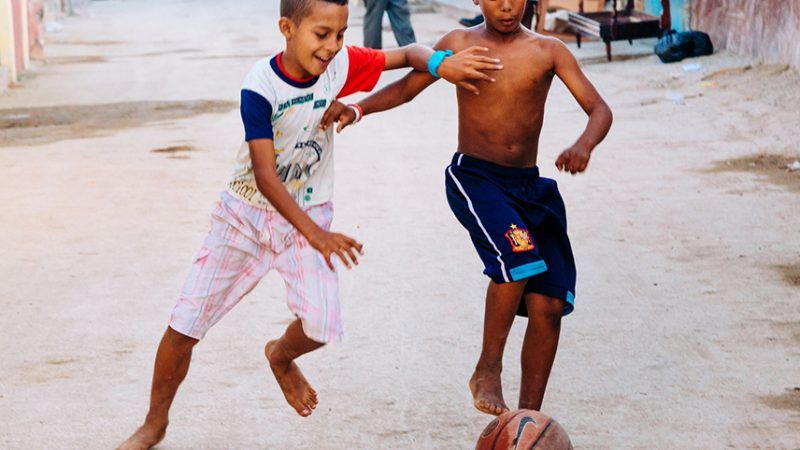We Don't Need Soccer Moms—or Dads, or Coaches

Between the two of them, Carlo Celli and Nathan Richardson—both language professors at Bowling Green State University in Ohio—have coached youth soccer for about 30 years.
Sweet, right? Actually, they say they were doing it all wrong. The problem isn't that they were coaching improperly. It's that they were coaching, period.
All kids really need to learn the game, Richardson says now, is "a ball, a place to play and some older kids to play with them." Instead, we have delivered them into the soccer-industrial complex—a top-down, adult-run, structured, supervised system that drains all the joy out of the game and, not coincidentally, all the creative genius. Celli and Richardson submit that the reason the U.S. men's professional team was knocked out of World Cup contention so early is that we're raising "soccer robots."
They didn't always feel that way. For a long time, the two men happily put local kids through their drills, starting as young as age 3. Then one morning, two of their 9-year-old players showed up to practice with their younger sisters, and one brought along another kid who hadn't played soccer before. The day was shot—they'd just have to let everyone goof off.
The kids proceeded to do just that, running around like puppies and making up moves. They laughed and yelped, and when the hour was up, they didn't want to go home. Celli and Richardson saw something they hadn't witnessed since their own childhoods: kids who weren't practicing the game. They were playing it.
And that, they realized, is the key. To get good at a game, kids need to play it, and adults need to get out of the way. So they stopped interfering and saw their players improve week by week. Their new book, Shoeless Soccer: Fixing the System and Winning the World Cup (Carlo Celli), is inspired by that experience, and by Pelé, the greatest soccer player of all time, who was known as "The Shoeless One." He grew up so poor in Brazil that he played in the street without footwear or even a ball—he used a sock filled with rags.
The solution is not to take away our children's shoes. But when kids play on streets rather than grass, the game is faster. Their reflexes get quicker. Same thing when they play with a bunch of different-sized balls or in a smaller space. And if somehow they do end up barefoot, they will immediately learn to kick properly—because if you strike a ball with your toes, you will howl in pain. But most importantly, without coaches yelling and a trophy on the line, kids are free to improvise, just like Pelé.
We've been getting this wrong from the beginning. America didn't used to be a soccer country. When we finally began to pay attention to the game, it was via TV, watching championships. "You see a giant green, grassy field, with referees and coaches and players on the bench—it looks like it is this elaborate thing," says Richardson. "But soccer is really the simplest game imaginable. The infrastructure should be incredibly minimalist."
We assumed our kids needed uniforms, cleats, shin guards, and of course a whole lot of adult involvement. Eventually that translated into an expensive proposition—youth sports are now a $15 billion industry—and one that eats up all a child's free time. "The amount of travel the kids do these days, to play in sports, it's insane," says Celli. "Kids are spending more time in the car than actually playing the game."
The pair's solution is as simple as it is radical: Give soccer back to the kids, at least through middle school, and let mixed ages play together.
Simple, right? But there's a problem. Send your kids out to kick around a ball old-school and they might not find anyone to play with, because everyone else is off at an adult-led practice. So the key is to get local Parks & Rec departments to offer a more shoeless version of the game. Dial back the trophies and travel. Send the parents off to get a coffee, or better still, have the kids arrive by bike.
And then let them play like Pelé.
This article originally appeared in print under the headline "We Don't Need Soccer Moms—or Dads, or Coaches."


Show Comments (107)